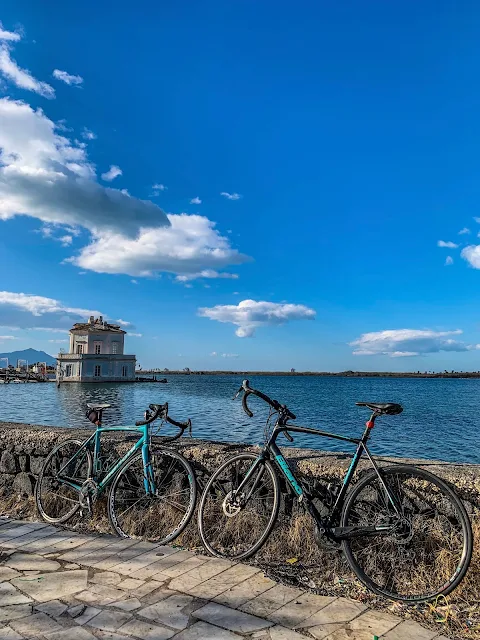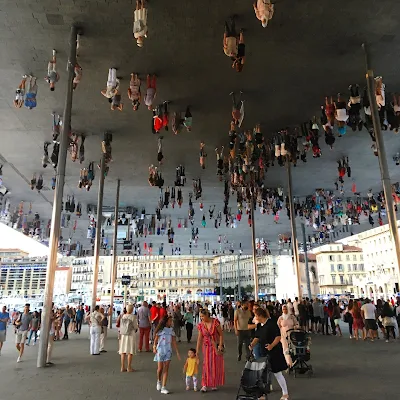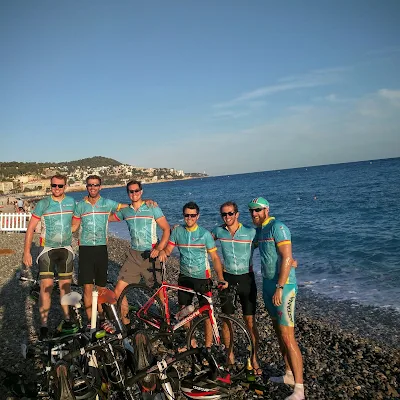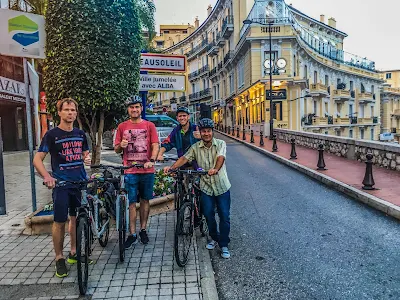 |
| Cycling Phlegraean fields, having a break at the Casina Vanvitelliana on Fusaro lake. |
Today we would share with you some details of a stunning place where we suggest to stop to enjoy a break when you are biking the bay of Naples on south Italy: the lake Fusaro and the Casina Vanvitelliana.
The lake Fusaro is located in the municipality of Bacoli and gives its name to the homonymous village that welcomes it. The lake was formed with the closure of the stretch of sea between the hamlets of Torregaveta and Cuma.
In ancient times it was identified with the mythical Acherusia palus, the infernal swamp formed by the river Acheronte.
Before the Greeks, the local populations cultivated mussels and oysters in the lake. The farms of the lake are mentioned in the novel The Count of Montecristo by Alexandre Dumas, when the count serves at the table in his house of Auteuil a lamprey coming directly from Lake Fusaro among the amazement of the diners.
Since 1752 the Fusaro land, at the time sparsely inhabited, became the hunting and fishing reserve of the Bourbons, who entrusted Luigi Vanvitelli with the first works for the transformation of this place.
When Ferdinando IV ascended the throne, the interventions were completed by Carlo Vanvitelli, son of Luigi, who in 1782 built the Royal Casino of Hunt, on the lake, a short distance from the shore.
This building, known as Casina Vanvitelliana, was used as the residence of illustrious guests, such as Francis II of Habsburg-Lorraine, Wolfgang Amadeus Mozart, Gioachino Rossini and, more recently Luigi Einaudi, the President of the Italian Republic Luigi Einaudi.
The Casina Vanvitelliana is one of the most refined eighteenth-century buildings of Italy.
The project have some references to the shape of the Stupinigi hunting lodge, designed a few years earlier by Filippo Juvarra using plastic volumes and large windows.
The building wanted by the Bourbons has in fact a very articulated design, composed by three octagonal bodies that intersect each other at the top of the other, shrinking into a sort of pagoda, with large windows on two levels.
A long wooden pier also connects the Casina Vanvitelliana to the lake shore.














